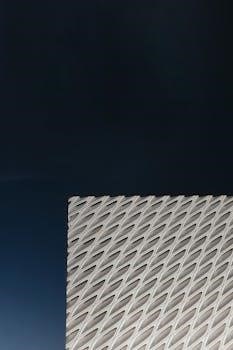7075-T6 aluminum alloy is renowned for its exceptional strength, making it a prime choice for applications demanding high performance. With a superior strength-to-weight ratio, it’s favored in aerospace, ordnance industries, and heavily stressed structural components. 7075-T6 exhibits good ductility and toughness.

Chemical Composition of 7075 Aluminum
The chemical composition of 7075 aluminum is precisely controlled to achieve its superior mechanical properties. Zinc is the primary alloying element, typically ranging from 5.6% to 6.1%, contributing significantly to its strength. Magnesium, another crucial element, is present in concentrations between 2.1% and 2.5%, further enhancing the alloy’s strength and hardness. Copper is added in amounts ranging from 1.2% to 1.6% to improve machinability and strength.
In addition to these primary elements, 7075 aluminum contains smaller amounts of other metals. Silicon, iron, manganese, titanium, and chromium are present in trace quantities, each playing a specific role in the alloy’s overall properties. These elements are carefully controlled to ensure optimal performance. A zirconium plus titanium limit of 0.25 percent maximum may be used with this alloy designation for extruded and forged products only. The precise balance of these elements dictates the alloy’s response to heat treatment and its final mechanical characteristics, making it a highly versatile material for demanding applications. The alloy composition roughly includes these percentages.

7075-T6 Temper Designation Explained
The “T6” designation in 7075-T6 signifies a specific heat treatment process applied to the aluminum alloy to achieve its characteristic high strength. This temper involves solution heat treatment followed by artificial aging. Solution heat treatment entails heating the alloy to a high temperature, holding it there to allow the alloying elements to dissolve evenly throughout the aluminum matrix, and then rapidly quenching it. This quenching process traps the alloying elements in a supersaturated solid solution.
Following quenching, the alloy undergoes artificial aging, where it is heated to a moderate temperature and held for a specific duration. During this aging process, the alloying elements precipitate out of the solution, forming fine, uniformly dispersed particles. These precipitates impede the movement of dislocations within the metal’s crystal structure, significantly increasing its strength and hardness. The T6 temper results in a material with a good combination of strength, machinability, and moderate corrosion resistance. Structural parts tend to be T651 temper, whereas skin sheets are generally T6 temper.
Mechanical Properties of 7075-T6 Aluminum
7075-T6 aluminum boasts exceptional mechanical properties, including high tensile and yield strength. These properties make it suitable for highly stressed applications, such as aircraft components and tooling. It exhibits good ductility and toughness, balancing strength with formability.
Tensile Strength of 7075-T6
The tensile strength of 7075-T6 aluminum is a crucial mechanical property, representing its ability to withstand pulling forces before fracturing. It’s a key indicator of the material’s overall strength and suitability for demanding applications. 7075-T6 aluminum properties feature a tensile strength that is nearly double that of 6061 T6 aluminum properties.
Typically, 7075-T6 exhibits a tensile strength ranging from 510 to 572 MPa (74,000 to 83,000 psi). This high tensile strength makes it a preferred choice for components subjected to significant stress; The T6 temper significantly enhances the tensile strength compared to other tempers.
In aerospace applications, where weight savings are critical, the high tensile strength of 7075-T6 allows for thinner and lighter components. Similarly, in tooling and mold-making, it ensures the durability and longevity of the equipment. The superior stress corrosion resistance of the T73 and T7351 tempers makes it a logical replacement for 2024, 2014 and 2017 in many of the most critical applications. The T651 temper 7075 has an ultimate tensile strength of 570 MPa (83,000 psi).
It is a testament to human ingenuity and engineering excellence.
Yield Strength of 7075-T6
The yield strength of 7075-T6 aluminum is another critical mechanical property, defining the stress level at which the material begins to deform permanently. It indicates the material’s resistance to plastic deformation under load. 7075-T6 aluminum properties feature a tensile strength that is nearly double that of 6061 T6 aluminum properties.
Typically, 7075-T6 exhibits a yield strength ranging from 430 to 503 MPa (63,000 to 73,000 psi). This high yield strength ensures that components can withstand significant loads without permanent deformation. The T6 temper significantly enhances the yield strength compared to other tempers. Its alloys composition roughly includes 5.6-6.1 zinc, 2.1-2.5 magnesium, 1.2-1.6 copper, and less than a half percent of silicon, iron, manganese, titanium, chromium, and other metals.
In high-stress applications, such as aircraft structures and automotive components, a high yield strength is essential to prevent permanent bending or distortion. The superior stress corrosion resistance of the T73 and T7351 tempers makes it a logical replacement for 2024, 2014 and 2017 in many of the most critical applications. The T651 temper 7075 has a yield strength of 500 MPa (73,000 psi).
It is a testament to human ingenuity and engineering excellence.
Elongation of 7075-T6
Elongation is a measure of a material’s ductility, indicating how much it can stretch or deform before fracturing under tensile stress. For 7075-T6 aluminum, elongation is typically expressed as a percentage of the original length. This property reveals the material’s ability to withstand deformation without failure, crucial in applications involving bending or forming.
The elongation of 7075-T6 usually falls within the range of 5-11%. This level of ductility allows the material to absorb energy and redistribute stress, preventing brittle fractures. The T6 temper, achieved through solution heat treatment and artificial aging, optimizes the balance between strength and ductility. It is a very high strength aerospace aluminum.
While 7075-T6 is renowned for its high strength, its elongation is moderate compared to more ductile aluminum alloys. This characteristic is essential for parts that may experience impact or bending forces. Alloy 7075 aluminum coil and sheet have been and remain the baseline standard with a good balance of properties required for aerospace applications. It has a failure elongation of 39.
The superior stress corrosion resistance of the T73 and T7351 tempers makes it a logical replacement for 2024, 2014 and 2017 in many of the most critical applications. Its alloys composition roughly includes 5.6-6.1 zinc, 2.1-2.5 magnesium, 1.2-1.6 copper.
Hardness of 7075-T6
Hardness is a material’s resistance to localized plastic deformation, typically measured by indentation. The hardness of 7075-T6 aluminum is a key indicator of its wear resistance and overall durability. Common hardness tests for aluminum alloys include Brinell and Rockwell measurements. These tests provide a numerical value representing the material’s resistance to indentation.
7075-T6 aluminum typically exhibits a high hardness value due to its composition and heat treatment. The T6 temper, achieved through solution heat treatment and artificial aging, significantly increases the material’s hardness. With a hardness of 150, AA; Typical; 500 g load; 10 mm ball.
The high hardness of 7075-T6 makes it suitable for applications where wear resistance is critical. It is a very high strength aerospace aluminum. The superior stress corrosion resistance of the T73 and T7351 tempers makes it a logical replacement for 2024, 2014 and 2017 in many of the most critical applications. Its alloys composition roughly includes 5;6-6.1 zinc, 2;1-2.5 magnesium, 1.2-1.6 copper.
Compared to other aluminum alloys, 7075-T6 generally has a higher hardness, reflecting its superior strength and wear resistance. This property is essential for components subjected to abrasive conditions or repetitive contact.
Physical Properties of 7075 Aluminum
7075 aluminum exhibits key physical attributes beyond mechanical properties. These include density, thermal conductivity, and electrical conductivity. Understanding these properties is crucial for various engineering applications. These characteristics influence the material’s behavior under different environmental conditions and operational stresses.
Density of 7075 Aluminum
The density of 7075 aluminum is a fundamental physical property that plays a significant role in determining its suitability for various applications. Specifically, the density of 7075 aluminum is approximately 2.81 g/cm3 (0.102 lb/cu in). This relatively low density contributes to its high strength-to-weight ratio, making it a popular material in industries where weight reduction is a critical factor, such as aerospace and transportation.
In aerospace applications, the low density of 7075 aluminum helps to reduce the overall weight of aircraft and spacecraft, leading to improved fuel efficiency and performance. Similarly, in the automotive industry, using 7075 aluminum components can lead to lighter vehicles, resulting in better fuel economy and handling.
The density of 7075 aluminum can also influence its thermal properties, such as thermal conductivity and thermal expansion. These properties are important considerations in applications where the material is exposed to varying temperatures. Overall, the density of 7075 aluminum is a crucial physical property that contributes to its widespread use in various engineering applications.
Thermal Conductivity of 7075 Aluminum
Thermal conductivity is a crucial physical property of 7075 aluminum, dictating its ability to conduct heat. 7075 aluminum exhibits a moderate level of thermal conductivity. The thermal conductivity of 7075 aluminum is influenced by its chemical composition and temper.
In practical terms, this means that 7075 aluminum can efficiently transfer heat, making it suitable for applications where heat dissipation is required. For instance, it can be used in heat sinks and other thermal management systems to prevent overheating of electronic components.
However, compared to other materials like copper or pure aluminum, 7075 aluminum has a lower thermal conductivity. This may limit its use in applications where extremely high heat transfer rates are necessary. Engineers must consider the thermal conductivity of 7075 aluminum when designing components that will be exposed to high temperatures or require efficient heat dissipation. Additionally, coatings or surface treatments can be applied to enhance the thermal conductivity of 7075 aluminum in specific applications.

Applications of 7075-T6 Aluminum
7075-T6 aluminum is widely used in various industries due to its exceptional strength, lightweight nature, and good machinability. Its high strength-to-weight ratio makes it ideal for aerospace applications. 7075-T6 is commonly used in aircraft structures, including wing components and fuselage parts, where weight reduction is critical.
In the ordnance industry, 7075-T6 is employed in the manufacturing of firearms and other military equipment due to its ability to withstand high stresses. The alloy’s excellent machinability also makes it suitable for producing complex parts with tight tolerances. 7075-T6 finds applications in the automotive sector.
Furthermore, 7075-T6 is utilized in sporting goods, such as bicycle frames and climbing gear, where high strength and low weight are essential. Its resistance to corrosion makes it suitable for marine applications, including boat fittings and underwater structures. The versatility of 7075-T6 aluminum makes it a valuable material in various engineering fields, offering a balance of strength, weight, and machinability for demanding applications.
Machinability of 7075-T6 Aluminum
7075-T6 aluminum alloy is generally considered to have good machinability, making it suitable for various manufacturing processes. Its composition allows for efficient material removal, resulting in smooth surface finishes and precise dimensions. The alloy’s response to cutting tools is predictable, enabling consistent and reliable machining operations.
When machining 7075-T6, it’s important to use appropriate cutting parameters, such as speed, feed rate, and depth of cut, to optimize material removal and minimize tool wear. Sharp cutting tools and adequate lubrication are essential for achieving the best results and preventing built-up edge formation. The alloy’s relatively high strength may require slightly lower cutting speeds compared to softer aluminum alloys.
Proper chip control is crucial to prevent chip entanglement and ensure efficient machining. 7075-T6 typically produces small, well-broken chips that are easy to manage. The alloy’s machinability makes it a preferred choice for manufacturing complex parts with intricate geometries. Overall, 7075-T6 aluminum offers a good balance of machinability and mechanical properties.

Corrosion Resistance of 7075 Aluminum
7075 aluminum alloy exhibits only average corrosion resistance compared to other aluminum alloys. Its high zinc content makes it more susceptible to corrosion, especially in harsh environments. While the T6 temper enhances its mechanical properties, it does not significantly improve its corrosion resistance.
In environments with high humidity or exposure to chlorides, 7075 aluminum can experience pitting corrosion and intergranular corrosion. To mitigate these issues, surface treatments such as anodizing or cladding are often employed. Anodizing creates a protective oxide layer on the surface, while cladding involves bonding a thin layer of a more corrosion-resistant alloy to the 7075 aluminum core.
For applications where corrosion resistance is critical, alternative alloys like 5052 or 6061 may be more suitable. However, if the high strength of 7075 aluminum is essential, protective measures should be implemented to minimize corrosion. Regular inspection and maintenance are also important to detect and address any signs of corrosion early on. The T73 temper is an alternative to T6 which offers better corrosion resistance.
